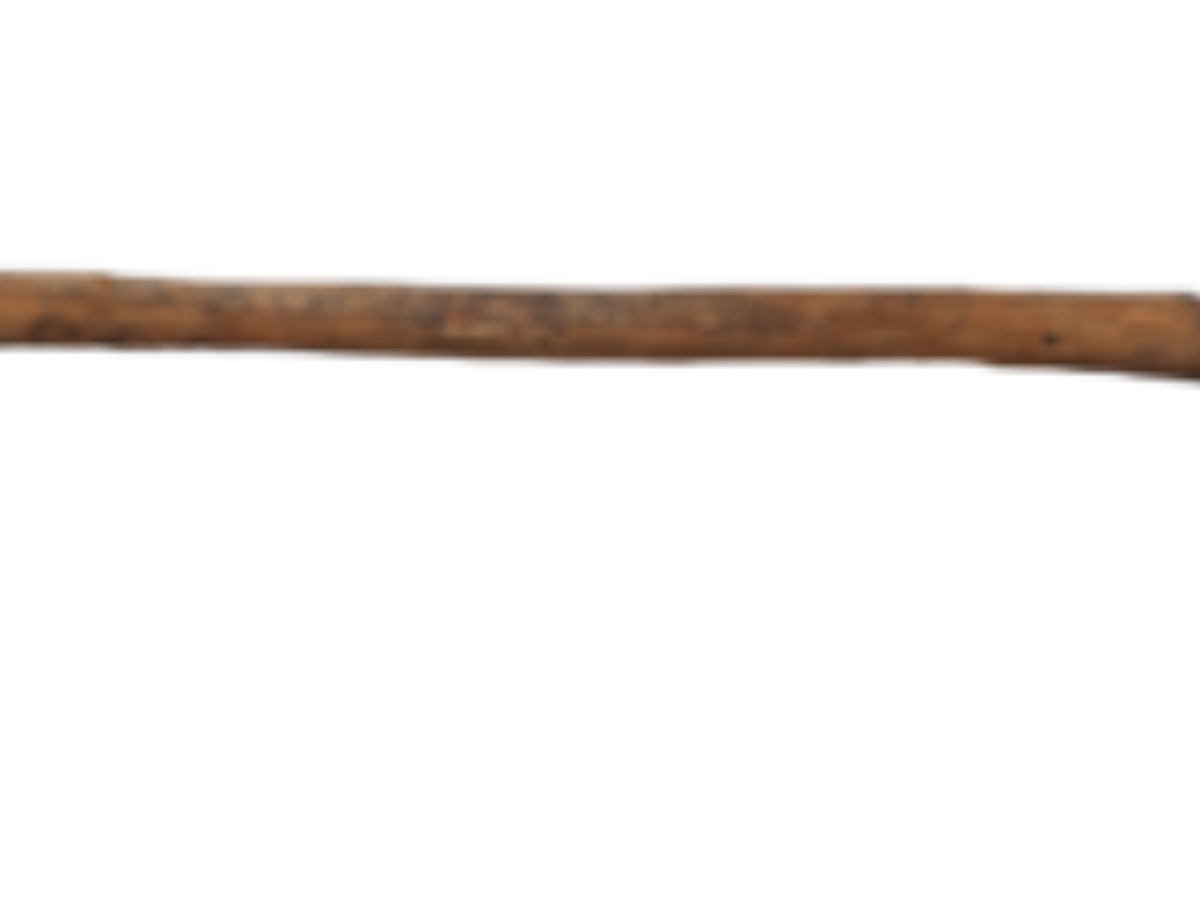State
Tribe Name
Art Type
short description
The Santals are among the biggest tribes of Jharkhand, the state that prevails alongside Orissa and West Bengal, because they rely on agricultural and sustainable practices in their livelihood. The customary digging stick is one of their significant implements in agriculture, which proves to be a fine tool in leading tillage and preparing the land for sowing.The digging stick has a rectangular iron blade with straight and blunt cutting edge, which breaks very hard soil. A small tang passes from the blade into a long wooden handle. An iron ferrule fitted over the edge of the blade in the joint, increases its durability and withstanding rigidity during repeated use. Broad at the bottom and with many ridges which might be intended to create better grip for the user in digging work, this handle has.
Thumbnail

Filter Postion
Left
Filter Background
Off
Theme
Filter Header Image

content
Image

description
The Santals are among the biggest tribes of Jharkhand, the state that prevails alongside Orissa and West Bengal, because they rely on agricultural and sustainable practices in their livelihood. The customary digging stick is one of their significant implements in agriculture, which proves to be a fine tool in leading tillage and preparing the land for sowing.The digging stick has a rectangular iron blade with straight and blunt cutting edge, which breaks very hard soil. A small tang passes from the blade into a long wooden handle. An iron ferrule fitted over the edge of the blade in the joint, increases its durability and withstanding rigidity during repeated use. Broad at the bottom and with many ridges which might be intended to create better grip for the user in digging work, this handle has.
This humble tool is for tilling ground, planting tubers, or uprooting weeds. The activities reflect the traditional Santals' agriculture, which is tied with manual work over quite a long time of knowledge of their land. Santals using woods and iron would gather the materials from their local markets and construct them using methods handed down from generation to generation.These tools preserve the arts and crafts of the Santals and show the agricultural heritage of the community. Preserved in ethnographic collections like the Indian Museum, Kolkata, these portray the resiliency, resourcefulness, and relationship of the entire community to nature.
This humble tool is for tilling ground, planting tubers, or uprooting weeds. The activities reflect the traditional Santals' agriculture, which is tied with manual work over quite a long time of knowledge of their land. Santals using woods and iron would gather the materials from their local markets and construct them using methods handed down from generation to generation.These tools preserve the arts and crafts of the Santals and show the agricultural heritage of the community. Preserved in ethnographic collections like the Indian Museum, Kolkata, these portray the resiliency, resourcefulness, and relationship of the entire community to nature.
Image Mode
landscape
promoted
On
Verified
Off
